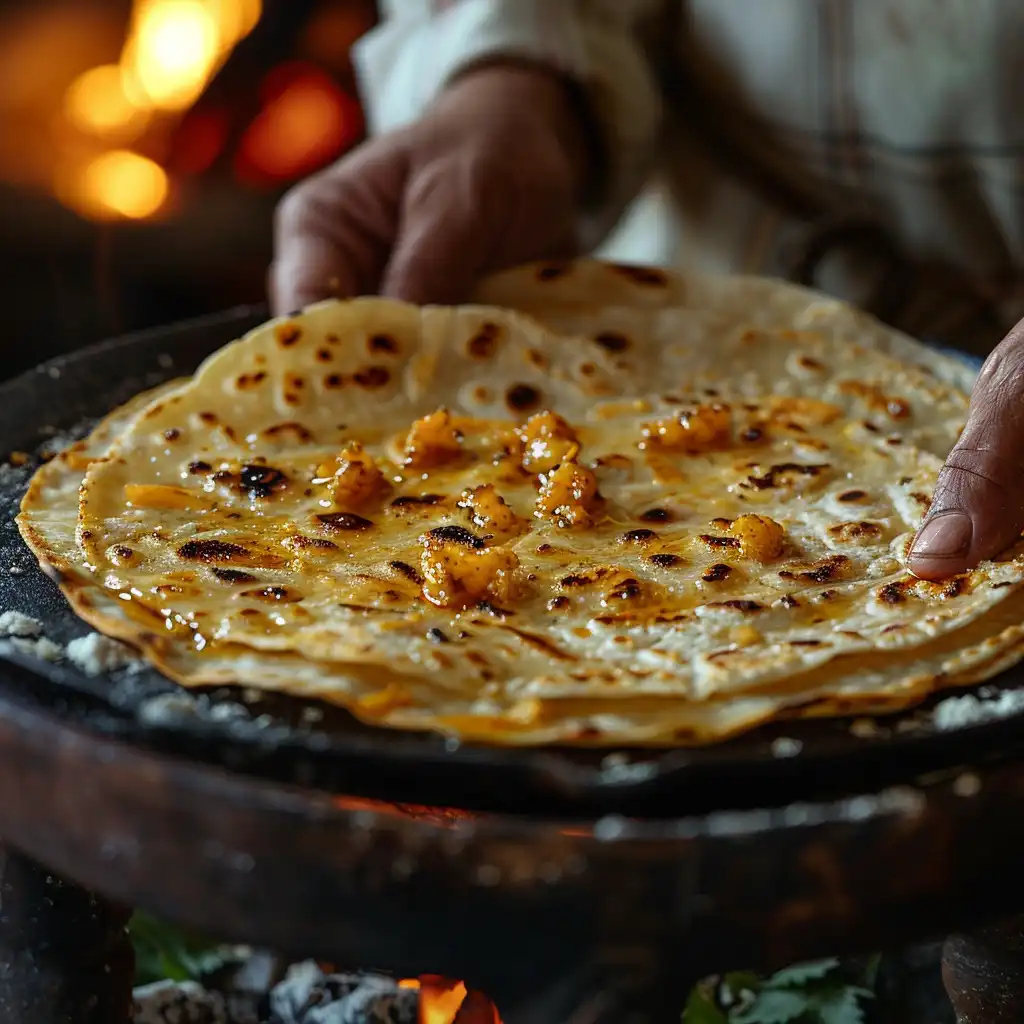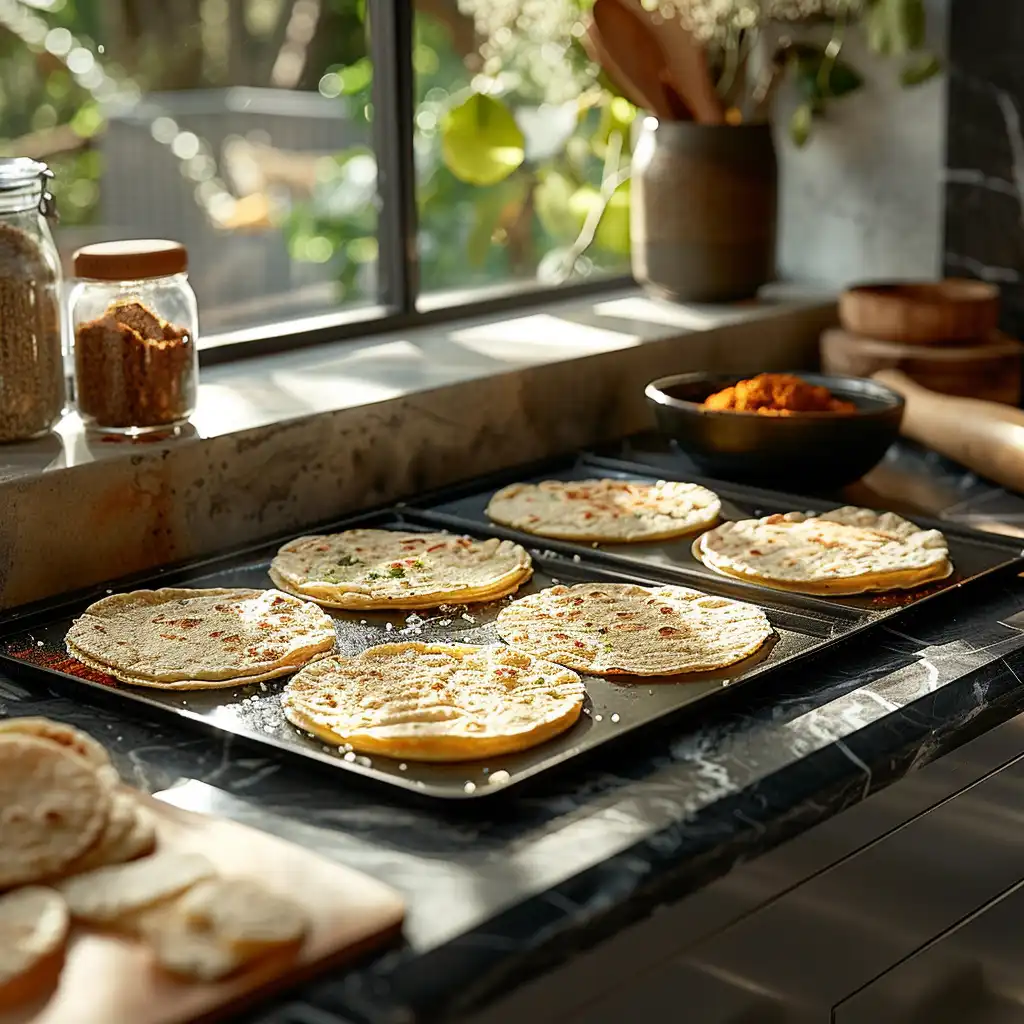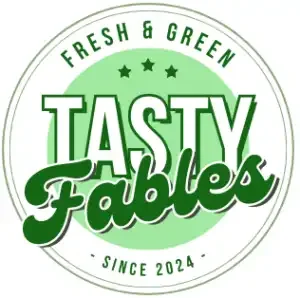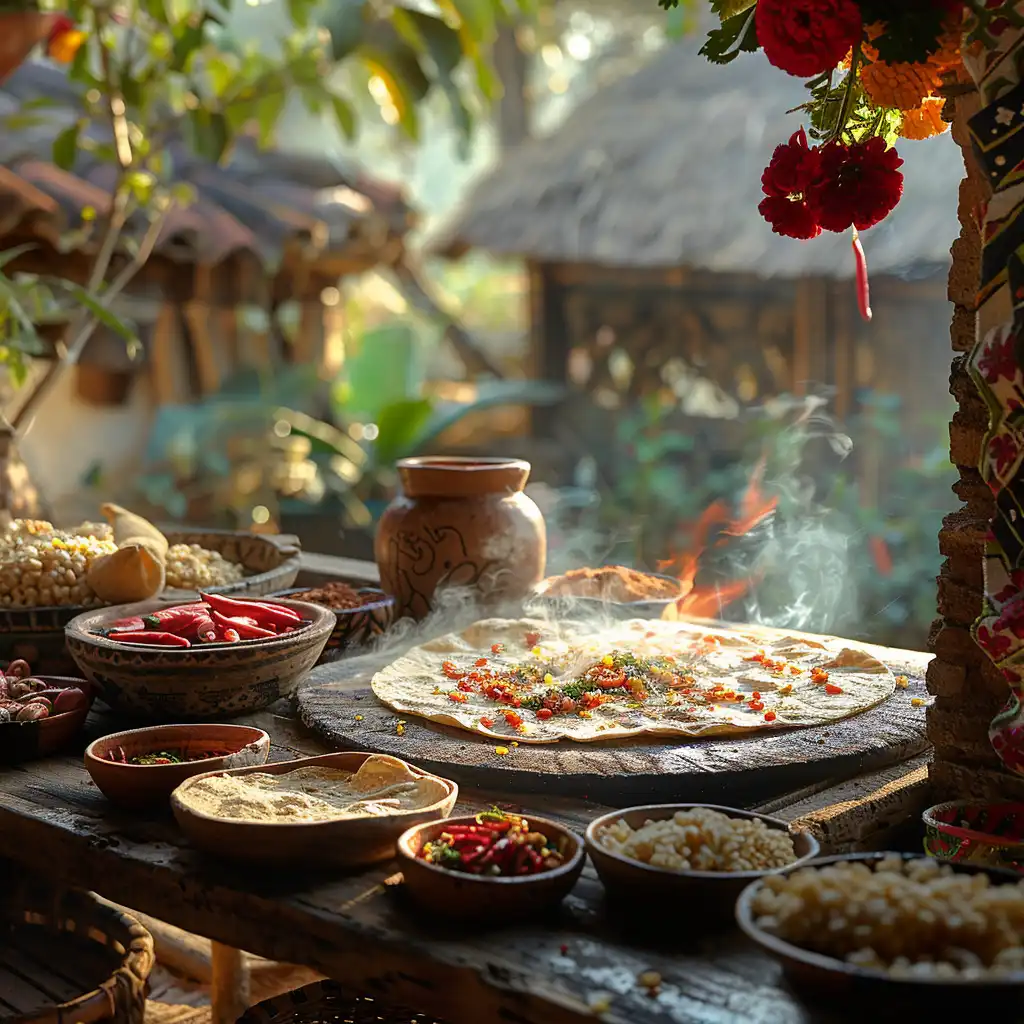Tortillas are an irreplaceable part of Mexican cuisine and culture. From their ancient origins to their continued presence in households around the world, tortillas are not just a food item but a cultural emblem. The key to making authentic tortillas lies not only in the ingredients but also in the tools used to prepare them. What do Mexicans cook tortillas on? The answer reveals a blend of tradition, history, and regional diversity. This article dives deep into the roots of tortillas, the traditional and modern equipment used to cook them, and how you can replicate the process at home.
The History and Significance of Tortillas in Mexican Culture
The Ancient Origins of Tortillas
The history of tortillas dates back over 10,000 years, with roots steeped in the traditions of ancient Mesoamerican civilizations like the Maya and Aztecs. According to Mayan legend, a humble peasant invented tortillas to feed his hungry king. Back then, tortillas were made from corn, which was considered sacred and a gift from the gods. The corn kernels were soaked in water mixed with limestone to soften them, a process now called nixtamalization. Afterward, they were ground into a dough called masa, forming the base of the tortillas we know today.
Tortillas were essential for survival and carried deep spiritual significance. They symbolized life and sustenance, connecting the people to the earth. Corn itself was a staple crop, serving as a foundation for the diet of these ancient communities. This rich history makes tortillas far more than just flatbread—they’re a cultural cornerstone of Mexican heritage.
The Role of Tortillas in Modern Mexican Cuisine
Fast-forward to today, and tortillas are still at the heart of every Mexican meal. Whether they’re used to wrap tacos, cradle fillings in burritos, or scoop up savory stews, tortillas are undeniably versatile. They’re made in different sizes, colors, and textures depending on the region. You’ll find white, yellow, blue, and even red tortillas, each reflecting the unique characteristics of the corn used.
Interestingly, tortillas are more than just food; they’re a lifestyle. In many Mexican households, tortillas are made fresh daily using tools like the comal (a flat griddle) or modern tortilla presses. For Mexicans, a meal without tortillas often feels incomplete, as they are a tangible link to their history and traditions.
Moreover, tortillas have transcended borders, becoming a global favorite. They’ve been adapted in creative ways, from tortilla chips to wraps, yet they retain their authenticity when made the traditional way. Understanding the origins and significance of tortillas gives you a greater appreciation of the tools and methods used to cook them.
Traditional Methods for Cooking Tortillas
Using a Comal: The Most Popular Cooking Tool

When it comes to answering the question, What do Mexicans cook tortillas on?, the comal is the star of the show. A comal is a flat, round griddle made from materials like cast iron, clay, or aluminum. It has been used for hundreds of years to cook tortillas and other Mexican favorites like quesadillas, sopes, and roasted veggies. Its ability to spread heat evenly makes it perfect for cooking tortillas.
In the past, comals were often made from clay and used over open fires. This tradition still exists in many rural areas where customs are deeply valued. The smoky flavor from clay comals is unique and hard to match. In cities, cast-iron and aluminum comals are more common because they last longer and are easier to use. No matter the material, the comal is an important part of Mexican cooking.
Using a comal is simple and effective. You heat it up until it’s very hot, then place the tortilla directly on it. When the edges start to dry, you flip it to cook the other side. This straightforward process shows why the comal is a must-have in Mexican kitchens.
Stone Mortars and Their Historical Role
Before tortilla presses existed, stone tools like the metate and mano were key for making tortillas. These tools were used to grind cooked corn into masa, the dough for tortillas. While modern kitchens now use machines for this, these ancient tools are still valued for their cultural and historical importance.
The metate is a large, flat stone used as a base for grinding. The mano is a smaller, rolling pin-shaped stone used to crush the softened corn. This hard work was often done together with family or neighbors, making it a shared, social activity.
Today, the metate isn’t something most kitchens need, but it’s still used in special ceremonies to celebrate Mexico’s cooking traditions. Grinding masa by hand with a metate gives tortillas a unique, rustic texture that machines can’t fully replicate.
Other Traditional Cooking Methods for Tortillas
Besides the comal, tortillas have also been cooked over open flames or on clay stoves. These traditional methods are still used in remote areas where modern stoves aren’t available. Cooking over an open flame gives tortillas a smoky flavor and a light char, making them taste even better.
Clay stoves, called fogones, are another traditional option. They are made from local materials and use firewood for heat. Tortillas cooked on fogones have a special smell and flavor that capture the natural, earthy essence of traditional Mexican cooking.
Modern Equipment for Cooking Tortillas
Electric Griddles and Their Convenience

In modern kitchens, electric griddles have become a popular option instead of the comal. They are simple to use and great for busy families. With features like adjustable heat settings and non-stick surfaces, electric griddles make cooking tortillas easier.
One big benefit of electric griddles is their ability to spread heat evenly. Unlike traditional comals, which need you to control the heat manually, electric griddles keep the temperature steady. This helps tortillas cook evenly without burning.
However, some people feel that electric griddles don’t give the same authentic taste or texture as a comal. While they are very convenient, they can’t fully match the flavor from traditional methods. Even so, many find the convenience worth the trade-off.
Tortilla Presses: Combining Tradition and Efficiency
The tortilla press isn’t a cooking tool, but it’s very important for shaping masa into perfect circles before cooking. Modern tortilla presses are made from materials like wood, cast iron, or aluminum, so you can choose one that suits your needs.
The tortilla press has made life easier for home cooks and chefs alike. It quickly flattens masa balls, making them the same size and thickness every time. This consistency helps tortillas cook evenly, whether you’re using a comal or an electric griddle.
Today, many tortilla presses are designed to look modern while still keeping their traditional purpose. They’re not just useful but can also add style to your kitchen. Getting a good-quality tortilla press can really improve your tortilla-making experience.
Let me know when you’re ready for the next part! If you’re interested, you can also check out articles like “What Is Sopa De Tortilla Made Of?” for more insights on Mexican cuisine.
Regional Variations in Tortilla Cooking Techniques
Northern Mexico: Flour Tortillas on Metal Plates
In Northern Mexico, flour tortillas are more popular than corn tortillas because wheat flour is more common there. These tortillas are soft, flexible, and bigger than corn tortillas, making them perfect for burritos and quesadillas. What do Mexicans cook tortillas on in this region? Many use flat metal plates or griddles, which heat up quickly and cook tortillas evenly. This helps give them a slight browning that adds to their flavor.
Flour tortillas in Northern Mexico have an interesting history. Wheat was brought to the region through trade routes, and these tortillas became a staple. They need a lower cooking temperature than corn tortillas, so they don’t get too dry or brittle. The smooth surface of the metal griddle keeps them soft and sturdy enough to hold hearty fillings like beans, cheese, or roasted meats.
Southern Mexico: Blue Corn Tortillas and Traditional Comals
In Southern Mexico, blue corn tortillas are very special. Made from old varieties of corn, these tortillas are not only bright in color but also full of nutrients and have a rich, earthy taste. What do Mexicans cook tortillas on in this region? Often, they use the traditional comal. Many families still rely on clay comals heated over wood fires, keeping the cooking traditions of their ancestors alive.
Cooking blue corn tortillas on a clay comal makes them taste even better. The slight char from the open fire adds extra flavor, and the clay’s heat ensures the tortillas cook evenly. These tortillas are often served with classic dishes like mole or barbacoa, making them an important part of Southern Mexican meals.
For more tasty Mexican recipes, take a look at “What Is Sopa De Tortilla Made Of?”—a hearty and flavorful dish that goes perfectly with tortillas.
How to Make Tortillas at Home Like a Mexican
Making Corn Tortillas from Scratch
If you’ve ever wondered what do Mexicans cook tortillas on and wanted to recreate the process at home, it’s easier than you think. Corn tortillas start with masa harina, a special corn flour made from nixtamalized corn. To make the dough, mix two cups of masa harina with about 1 1/2 cups of warm water and a pinch of salt. Knead the dough until smooth and pliable.
To shape the tortillas, a tortilla press is highly recommended. Simply place a small ball of dough between two sheets of plastic wrap or parchment paper, then press until it flattens into a perfect circle. If you don’t have a tortilla press, a heavy skillet or rolling pin works too.
Cooking Techniques for Authentic Flavor
Now comes the fun part—cooking your tortillas. Heat a comal or flat griddle over medium-high heat. Once hot, place the tortilla on the surface and cook for about 30 seconds until it begins to puff. Flip it and cook for another 30 seconds on the other side. The key to authentic flavor lies in the puffing; it signifies that the tortilla is fully cooked and ready to serve.
If a comal isn’t available, a non-stick pan or electric griddle can also work, though the flavor might differ slightly. Serve your freshly made tortillas warm, wrapped in a clean kitchen towel to keep them soft and pliable.
Cultural Importance of Cooking Tortillas on a Comal
Symbolism of the Comal in Mexican Households
A comal is not just a cooking tool; it’s a symbol of heritage and tradition in Mexican households. Passed down through generations, comals hold sentimental value and are often considered family heirlooms. But what do Mexicans cook tortillas on that makes it so special? The comal represents more than functionality—it embodies the essence of shared meals and cultural pride.
In many Mexican homes, the comal sits at the center of the kitchen, constantly in use for preparing not only tortillas but also roasted vegetables, spices, and even meats. Its enduring presence connects families to their ancestors, who used similar tools centuries ago. Preparing tortillas on a comal becomes a ritual, reinforcing familial bonds while honoring culinary traditions.
The versatility of the comal adds to its importance. Whether it’s a clay comal over an open flame or a cast-iron version on a modern stove, the tool continues to play a pivotal role in Mexican cuisine. Beyond its practical use, the comal carries an almost sacred quality, linking daily life with cultural identity.
The Modern-Day Comal: How It’s Preserved in Mexican Cuisine
Even with the rise of modern cooking tools, the comal is still an important part of Mexican kitchens. Keeping the comal alive shows a strong effort to protect tradition and cultural pride. While electric griddles and non-stick pans are convenient, they don’t have the same charm or flavor-boosting qualities as a comal.
Many chefs and home cooks prefer the comal because it gives tortillas a smoky, earthy flavor that brings out their natural taste. Taking care of a comal, like seasoning it properly, adds to its value and keeps this tool ready for daily use.
Even outside Mexico, the comal has become popular with people who want an authentic way to make tortillas. Its simple design and reliable performance make it a timeless kitchen tool that will continue to be used for generations to come.
FAQs About Cooking Tortillas
What Is the Best Surface to Cook Tortillas On?
When it comes to authenticity, the comal is the best surface to cook tortillas on. Its even heat distribution and ability to add a subtle char make it unbeatable. However, alternatives like electric griddles or cast-iron pans can also work well, especially for beginners or those without access to traditional tools.
How Do You Properly Season a Comal?
Seasoning a comal is essential for maintaining its non-stick surface and enhancing its longevity. To season, heat the comal over medium heat and rub a thin layer of oil across its surface. Allow the oil to bake into the material before wiping off any excess. Repeat this process periodically to keep the comal in optimal condition.
Can You Cook Tortillas Without a Comal?
Absolutely! If a comal isn’t available, a cast-iron skillet, non-stick pan, or even an electric griddle can be used to cook tortillas. While the flavor might differ slightly, these tools still yield delicious results. The key is ensuring that the cooking surface is hot and evenly heated to mimic the properties of a comal.
For more tips on cooking and seasoning tortillas, feel free to explore similar guides and recipes from trusted sources. Curious about pairing tortillas with delicious soups? Check out What Is Sopa De Tortilla Made Of? for a traditional Mexican recipe that complements tortillas perfectly.
Conclusion and Final Thoughts
Tortillas are far more than a staple food—they’re a symbol of Mexican culture, history, and community. From ancient times to modern kitchens, tortillas have remained central to Mexican cuisine, connecting people to their heritage. The tools used to cook tortillas, especially the beloved comal, play a critical role in preserving authenticity and tradition. So, what do Mexicans cook tortillas on? The answer is rooted in cultural pride, from clay and cast-iron comals to modern griddles.
While modern innovations like electric griddles and non-stick pans offer convenience, they can’t fully replicate the flavors and textures achieved with a traditional comal. Whether you’re preparing flour tortillas on a metal plate in Northern Mexico or cooking blue corn tortillas over a clay comal in the south, the choice of cooking surface makes all the difference.
For home cooks, experimenting with these tools can be both fun and rewarding. By embracing traditional methods, you not only enhance the flavor of your tortillas but also honor a rich culinary legacy. As tortillas continue to evolve, their role as a bridge between past and present ensures they remain a beloved part of Mexican cuisine for generations to come.
Resources and Further Reading
Recommended Tools for Cooking Tortillas
If you’re inspired to make tortillas at home, investing in the right tools is essential. A comal is the gold standard, whether it’s made from clay, cast iron, or aluminum. For shaping tortillas, a tortilla press is a must-have. These tools ensure that your tortillas are perfectly round and evenly cooked.
If you prefer a modern approach, consider an electric griddle. It offers convenience and is perfect for beginners. While it may not deliver the same smoky flavor as a traditional comal, it’s a practical option for everyday use.
Further Exploration of Mexican Cuisine
For a deeper dive into Mexican food traditions, explore recipes that pair beautifully with tortillas. A great starting point is sopa de tortilla, a classic dish that highlights the versatility of tortillas. You can find a detailed recipe and history of this dish in our article “What Is Sopa De Tortilla Made Of?”.
Additionally, consider learning about regional Mexican cuisines, which showcase the diversity of tortilla preparations. From tacos al pastor in the center of the country to cochinita pibil in the Yucatán, tortillas are the perfect canvas for showcasing Mexico’s rich culinary heritage.
By combining the right tools, authentic ingredients, and traditional techniques, you can bring the spirit of Mexican cooking into your own kitchen. Start your tortilla-making journey today and experience the joy of this timeless tradition firsthand.

